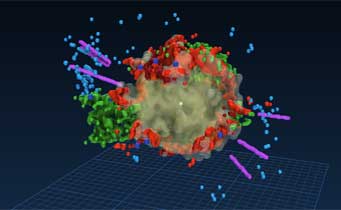Explore a supernova remnant with this fun interactive simulation.
Space images from Hubble and other telescopes are spectacular, but in one way they leave something to be desired: they usually flatten cosmic views to 2D. Yet the universe is not 2D: it’s a marvelous, three-dimensional expanse of planets, stars, and galaxies.

A new 3D simulation allows users to explore the supernova remnant Cassiopeia A.
Smithsonian Institution
So I geeked out a little when I saw a new 3D simulation of the Cassiopeia A supernova remnant. It’s part of a larger project by the Smithsonian Institution to digitize objects in such a way that people can interact with them. It’s not the 3D effect that mesmerized me (let’s face it, Cas A is much prettier in telescope images than in this computerized cartoon) but the ability to fly around the remnant as I pleased, looking at Cas A from all sides.
The 3D look is based on observations from the Chandra X-ray Observatory, the Spitzer Space Telescope, and ground-based facilities. These instruments collected data at different wavelengths, each providing unique views of the remnant, which lies 11,000 light-years away. Slight shifts in the wavelengths observed reveal which material is moving toward or away from us and by how much, giving a detailed picture of the remnant in 3D. It’s that information that’s key to creating the new simulation.
You can poke around the remnant on your own, or take the step-by-step tour of what it shows. Click on the differently colored pieces to learn which elements (such as ionized iron or silicon) show up in different parts of the remnant. My favorite view aesthetically is from the top: it looks like a frilled Christmas centerpiece.
 0
0









Comments
You must be logged in to post a comment.